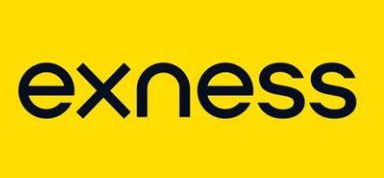Blockchain technology is one of the most talked-about innovations of the 21st century. From cryptocurrencies like Bitcoin to supply chain management and digital identity, blockchain is revolutionizing industries worldwide. But what exactly is blockchain, and why is it so important? If you’re new to understanding blockchain technology, this guide will help you understand the basics, its core features, and why it matters.
What Is Blockchain?
At its core, blockchain is a digital ledger. It is a system that keeps records safely and clearly. A blockchain is different from traditional databases. It is decentralized and spread out across many computers, known as nodes. This means no single entity controls the data, making it more secure and trustworthy.
Blockchain was first introduced in 2008 as the technology behind Bitcoin, the world’s first cryptocurrency. Since then, it has evolved far beyond digital money, powering a wide range of applications.
How Does Blockchain Technology Work?
Think of a blockchain as a chain made up of digital “blocks.” Each block contains a list of transactions or data, a timestamp, and a unique code called a hash. When a block is filled, it’s linked to the previous block, forming a continuous chain—hence the name “blockchain.”
Here’s how a typical blockchain transaction works:
- A transaction is requested.
- The transaction is broadcast to a network of computers (nodes).
- The network validates the transaction using consensus mechanisms.
- Once verified, the transaction is combined with others to form a new block.
- The new block is added to the chain, and the update is distributed across the network.
Since each block links to the one before it, changing any information means altering every block after it. This is a very hard task, which makes blockchain very secure.
Core Features of Blockchain
1. Decentralization
Unlike traditional systems where a central authority controls the database, blockchain operates on a peer-to-peer network. Every participant (node) has a copy of the entire blockchain, ensuring no single point of failure.
2. Immutability
Once data is recorded on the blockchain, it cannot be altered or deleted. This “write-once” feature makes blockchain ideal for record-keeping and audit trails.
3. Transparency and Trust
All transactions are visible to participants in the network. This openness builds trust, as anyone can verify the data independently.
4. Security
Blockchain uses advanced cryptography to secure data. Transactions are verified by consensus mechanisms, making it extremely difficult for hackers to manipulate the system.
Key Components of Blockchain Technology
- Distributed Ledger: A synchronized database shared across all network participants.
- Smart Contracts: Self-executing contracts with the terms directly written into code. They automate processes and reduce the need for intermediaries.
- Public and Private Keys: Cryptographic tools that secure identities and transactions. Public keys are shared openly, while private keys are kept secret.
Layers of Blockchain Architecture
- Infrastructure Layer: The physical network of computers.
- Data Layer: Where transaction records are stored.
- Network Layer: Manages communication between nodes.
- Consensus Layer: Ensures agreement on the validity of transactions.
- Application Layer: Where decentralized applications (dApps) run.
Types of Blockchains
- Public Blockchains: Open to anyone (e.g., Bitcoin, Ethereum).
- Private Blockchains: Restricted to specific users, often used by businesses.
- Consortium/Hybrid Blockchains: Controlled by a group of organizations, combining features of both public and private blockchains.
Consensus Mechanisms
A consensus mechanism is a process by which the network agrees on the validity of transactions. Common types include:
- Proof of Work (PoW): Requires solving complex puzzles (used by Bitcoin).
- Proof of Stake (PoS): Validators are chosen based on the number of coins they hold.
- Others: Delegated Proof of Stake (DPoS), Proof of Authority (PoA), etc.
Real-World Applications of Blockchain
Blockchain is already transforming many industries:
- Cryptocurrencies: Bitcoin, Ethereum, and thousands of others.
- Supply Chain Management: Tracking goods from origin to delivery.
- Healthcare: Secure sharing of patient data.
- Finance: Faster, cheaper cross-border payments.
- Voting Systems: Transparent and tamper-proof elections.
Advantages and Challenges
Advantages:
- Enhanced security and transparency
- Reduced costs and intermediaries
- Faster transactions
- Greater trust and accountability
Challenges:
- Scalability issues (handling large numbers of transactions)
- High energy consumption (especially with PoW)
- Regulatory uncertainty
- Technical complexity
The Future of Blockchain
Blockchain technology is still evolving, with new applications and improvements emerging rapidly. From decentralized finance (DeFi) to digital identity and beyond, its potential is vast. As more industries adopt blockchain, understanding its basics will become increasingly valuable.
Conclusion
Blockchain is not just the backbone of cryptocurrencies. It is a new technology that can change how we store, share, and verify information. By grasping the fundamentals, you’re taking the first step toward understanding a technology that could define the future.
Frequently Asked Questions (FAQ)
Q: What are the key benefits of blockchain technology for businesses?
A: Blockchain provides enhanced transparency, security, cost savings, faster transactions, and better traceability.
Q: How does blockchain ensure the immutability of transactions?
A: Blockchain ensures immutability by cryptographically linking transactions to previous blocks, making them nearly impossible to alter.
Q: What role do smart contracts play in blockchain technology?
A: Smart contracts automate and enforce contract terms without intermediaries, ensuring faster, secure transactions.
Q: Can you explain the concept of consensus in blockchain?
A: Consensus ensures transaction validity through algorithms like Proof of Work or Proof of Stake, allowing decentralized agreement.
Q: How does public key cryptography enhance the security of blockchain networks?
A: Public key cryptography secures transactions by ensuring only the private key holder can authorize them.
















